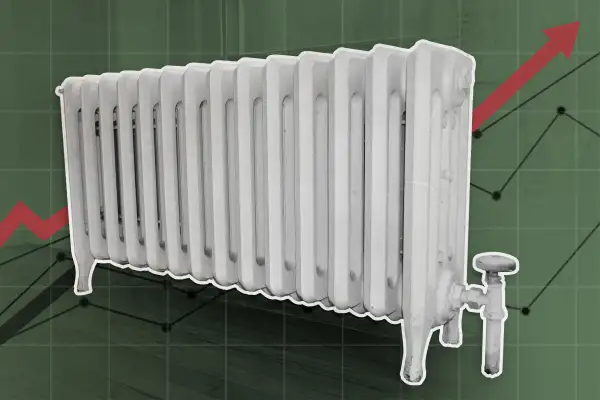Your Heating Bill Will Skyrocket This Winter. Here's What to Do About It

Energy costs are up, a colder-than-average winter is on the horizon, and experts say sky-high heating costs could gouge families with bills up to 54% higher than last year.
From October through March, wide swaths of the U.S. will face brutal weather and rising energy prices. It's a cold season double whammy that the U.S. Energy Information Administration (EIA) predicts will put a considerable dent in American wallets.
Fuel inventories like natural gas and propane are already near historic lows, so even a short snap of freezing temperature could spell trouble, the EIA says. For families who are already struggling to make ends meet heading into the holiday season, this is yet another financial blow.
Here’s what to know about rising heating costs — and how to save on your bill.
How much more will heating bills cost this winter?
Weather forecasting is a notoriously unreliable science. Even data from the National Oceanic and Atmospheric Administration (NOAA), the Department of Commerce agency the EIA pulls its data from, admits that precise forecasts “are generally not predictable more than a week in advance.”
Still, even with a considerable margin of error (10%), NOAA experts predict the average U.S. home will see about 3% more "heating degree days” this winter, or days when the average temperature dips below 65 degrees Fahrenheit.
The price of this uptick is even harder to quantify, but the EIA predicts a marked rise. “We expect that households across the United States will spend more on energy this winter compared with the past several winters," the agency says in an October 2021 statement.
How families heat their homes will drive the cost of their bills. U.S. households that heat primarily with natural gas will spend about $746 on their heating bill this winter, or 30% more than they spent last year, the EIA predicts.
Those heating with electricity will see a 6% rise, and will pay an average of $1,268. Households that rely on heating oil or propane will pay a whopping 43% and 54% more, respectively, with some bills nearing (and in the case of propane, topping) $2,000 per home this winter.
Easy ways to save on heating bills
No matter how cold your part of the country gets, there are plenty of easy, inexpensive ways to keep warm while lowering your bills.
First, make sure any device that helps heat your home — radiators, furnaces, registers — is clean and free of debris. Rotate out filters that need replacing and remove anything that blocks warm air from circulating, like furniture on top of a register or curtains draped over a radiator.
You’ll also want to avoid blasting the thermostat 24 hours a day. The U.S. Energy Department recommends setting a programmable thermostat “as low as is comfortable” in the winter, and even lower when you’re asleep or away.
Another note on curtains: The Energy Department recommends keeping them open during the day in south-facing rooms to let as much sunlight into your home as possible (and then closing them at night to block the winter chill).
Other ways to lower heating costs
There are other tricks to help bring your heating bill down, but most require a little more elbow grease — and cash.
One route is to add more insulation to your home. The U.S. Energy Department has a wealth of information on DIY and professionally outsourced installation, like what kind of materials to use and where exactly to install it.
For a cheaper and less labor-intensive option, seal up cracks around your doors or windows with caulk, or install weatherstripping.
Home renovations aren't free, but here's some good news: All of these options come with a tax break of up to $500, plus there are additional local tax deductions available in some parts of the country.
How to get financial assistance for utility bills
Many states offer utility payment assistance to low-income households — Benefits.gov, a website run by the Department of Labor, has a state-by-state breakdown of all these programs.
In many parts of the country, it’s also possible to shop around for the cheapest natural gas provider (same goes for electricity). Some state government-run websites even have dedicated pages where residents can plug in their ZIP codes and see every available provider in their area.
Many homeowners choose to further drive down costs by making their homes more energy-efficient. Options run the renovation gamut, from installing new home appliances to investing in solar power. In some cases, homeowners receive tax credits and rebates to help offset the sticker price.
More from Money:
Homebuyers Are Baffling Real Estate Agents With High-Tech Home Office Wishlists
Young Snowbirds: The Pandemic Real Estate Trend We Didn't See Coming
What's Your Best Place? How to Decide Where to Live in a Pandemic-Changed World

